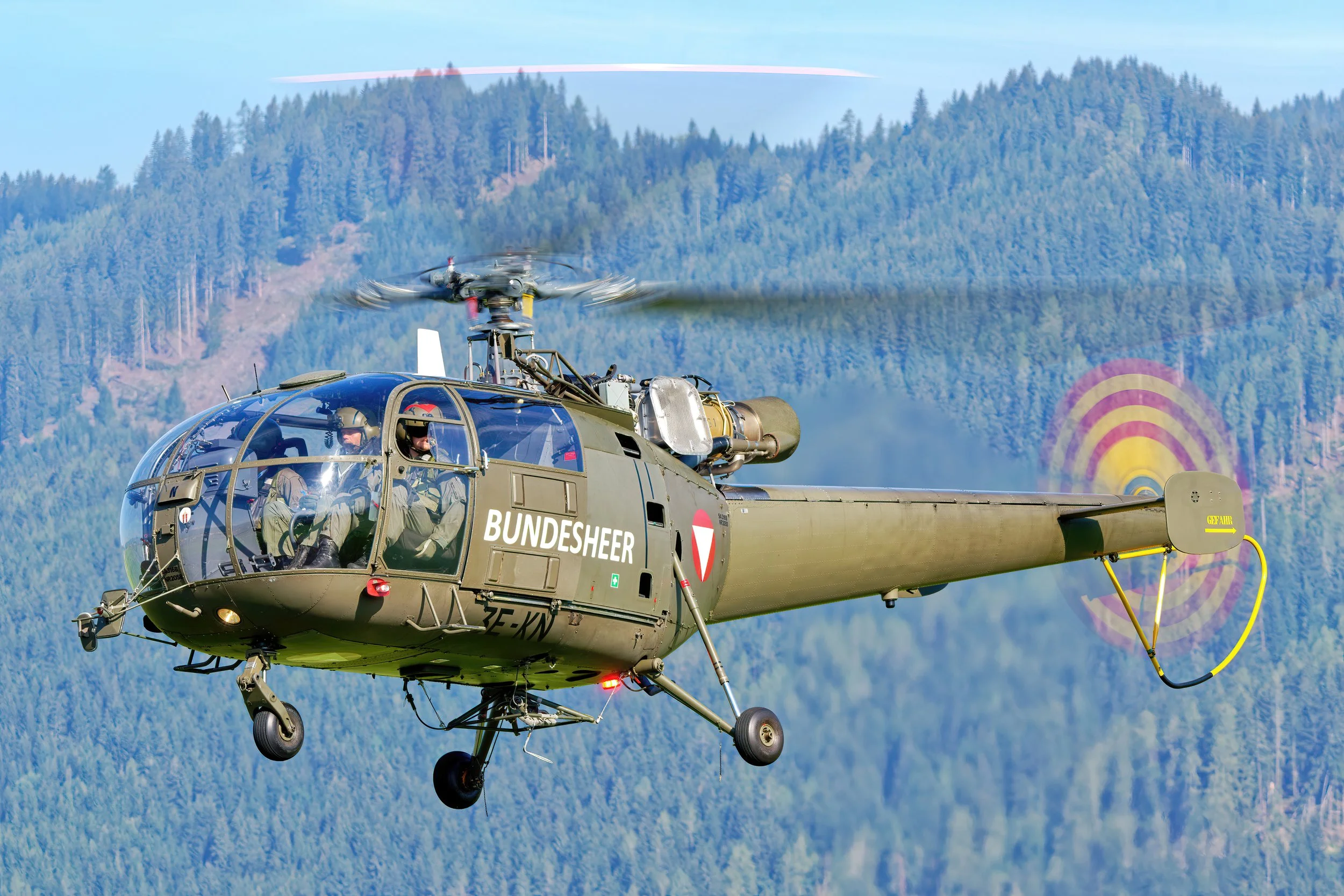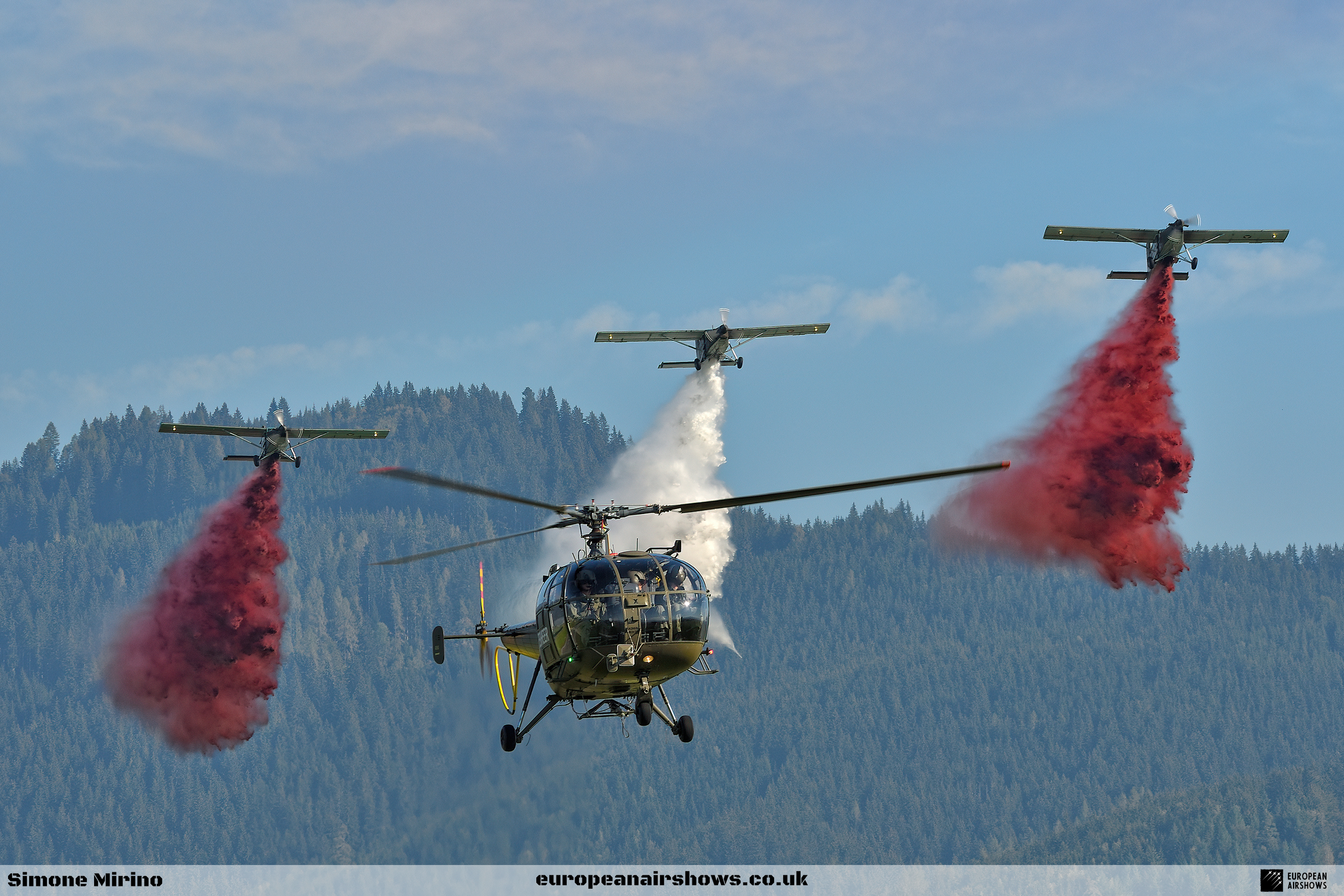
February 28 / Alouette III first flight
First Flight 28 February 1959
Aérospatiale Alouette III
The Aérospatiale Alouette III (company designations SA 316 and SA 319) is a single-engine, light utility helicopter developed by French aircraft company Sud Aviation. During its production life, it proved to be a relatively popular rotorcraft; including multiple licensed manufacturers, more than 2,000 units were built.
The Alouette III was developed as an enlarged derivative of the earlier and highly successful Alouette II. Sharing many elements with its predecessor while offering an extra pair of seats and other refinements, it quickly became a commercial success amongst both civil and military customers. Further variants were also developed; amongst these was a high-altitude derivative, designated as the SA 315B Lama, which entered operational service in July 1971. The Alouette III was principally manufactured by Aérospatiale; the type was also built under licence by Hindustan Aeronautics Limited (HAL) in India as the HAL Chetak, by Industria Aeronautică Română (IAR) in Romania as the IAR 316 and F+W Emmen in Switzerland.
Similar to the Alouette II, in military service, it was used to perform missions such as aerial observation, photography, air-sea rescue, liaison, transport and training; it could also be armed with anti-tank missiles, anti-shipping torpedoes, and a fixed cannon. In a civilian capacity, the Alouette III was commonly used for casualty evacuation (often fitted with a pair of external stretcher panniers), crop spraying, personnel transportation, and carrying external loads. By the 2010s, many operators were in the process of drawing down their fleets and replacing them with more modern types; the French military intended to replace their Alouette IIIs with the newly developed Airbus Helicopters H160.
The Alouette III has its origins with an earlier helicopter design by French aircraft manufacturer Sud-Est, the SE 3120 Alouette, which, while breaking several helicopter speed and distance records in July 1953, was deemed to have been too complex to be a realistic commercial product. Having received financial backing from the French government, which had taken an official interest in the venture, the earlier design was used as a starting point for a new rotorcraft that would harness the newly developed turboshaft engine; only a few years prior, Joseph Szydlowski, the founder of Turbomeca, had successfully managed to develop the Artouste, a 260 hp (190 kW) single shaft turbine engine derived from his Orédon turbine engine. An improved version of this engine was combined with the revised design to quickly produce a new helicopter, initially known as the SE 3130 Alouette II.
During April 1956, the first production Alouette II was completed, becoming the first production turbine-powered helicopter in the world. The innovative light helicopter soon broke several world records and became a commercial success. As a result of the huge demand for the Alouette II, manufacturer Sud Aviation took a great interest in the development of derivatives, as well as the more general ambition of embarking on further advancement in the field of rotorcraft.
In accordance with these goals, the company decided to commit itself to a new development programme with the aim of developing a more powerful helicopter that would be capable of accommodating up to 7 seats or a pair of stretchers. The design team was managed by French aerospace engineer René Mouille. The design produced, designated as the SE 3160, featured several improvements over the Alouette II; efforts were made to provide a higher level of external visibility for the pilot as well as for greater aerodynamic efficiency via the adoption of a highly streamlined exterior.








